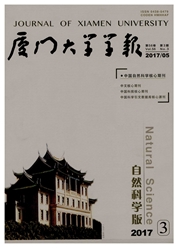

 中文摘要:
中文摘要:
面对多元间歇精馏过程的多阶段操作和非稳态运行特点以及高稳定性和高精度的控制需求,传统的反馈控制一般难以确定最优的回流比操作方案.针对该问题,在传统P(比例)型迭代学习控制(iterative learning control,ILC)算法的基础上,提出了一种学习增益沿批次指标自适应调整的变增益P型ILC算法.该算法能够保证间歇精馏过程在不同的操作时刻沿批次指标具有平衡的学习效率,从而提高过程控制性能沿批次指标的收敛速度.以Aspen Batch Distillation(ABD)软件系统中的一个三元间歇精馏模型为实际控制对象,对所提出的变增益P型ILC和传统PID控制以及P型ILC 3种控制方案进行了控制性能的仿真和比较,仿真结果证明了该控制算法不仅计算简单,同时比传统P型ILC算法具有更快的收敛速度.
 英文摘要:
英文摘要:
Due to the multi-stage operation and unstable dynamics in the multi-component batch distillations,traditional feedback control schemes may not ensure the optimal operation.Based on the traditional P-type iterative learning control(ILC) scheme,a new P-type ILC algorithm with adaptive learning rate is proposed in this paper to balance the learning effectiveness over the time-varying operational conditions and then improve the convergence rate of the ILC performance from batch to batch.In order to compare the control performances of the proposed control algorithm,traditional PID control and P-type ILC algorithm,the numerical simulates of the control schemes are implemented on an Aspen Batch Distillation(ABD) process model.The simulation results illustrate that the proposed varying-gain ILC algorithm is simple for implementation and can provide a faster convergence of the control performance along the batch index than traditional P-type ILC scheme.
 同期刊论文项目
同期刊论文项目
 同项目期刊论文
同项目期刊论文
 期刊信息
期刊信息
